 W
WEorpidae is a small family of extinct insects in the scorpionfly order, Mecoptera, which contains a single genus, Eorpa. Three Eocene age species found in Western North America have been placed into the genus: E. elverumi, E. jurgeni, and E. ypsipeda.
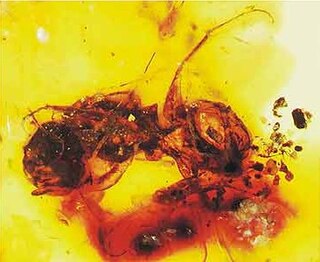 W
WMelittosphex burmensis is an aculeate wasp that was formerly considered one of the two oldest-known species of bees. The species was described from an inclusion in Burmese amber in the year 2006 by George Poinar, Jr., a zoologist at Oregon State University. The fossil was found in a mine in the Hukawng Valley of northern Myanmar and is believed to date from the Cretaceous Period, 100 million years ago.
 W
WPlumalexius is a genus of wasps in the extinct monotypic family Plumalexiidae, containing two species: the type species Plumalexius rasnitsyni, known from the Late Cretaceous White Oaks Pit in Sayreville, New Jersey, and Plumalexius ohmkuhnlei, known from the Cretaceous Burmese amber.
 W
WAgapytho is the only genus of beetles in the family Agapythidae. The genus contains a single species, Agapytho foveicollis, found in New Zealand. It is an inhabitant of New Zealands sooty mold habitat.
 W
WAgathemera is a genus of stick insects in the suborder Euphasmatodea and superfamily Pseudophasmatoidea. It consists of several species limited to the mountainous regions of Argentina, Chile and Peru.
 W
WAmphizoa is a genus of aquatic beetles in the suborder Adephaga, placed in its own monogeneric family, Amphizoidae. There are five known species of Amphizoa, three in western North America and two in eastern palearctic. They are sometimes referred to by the common name troutstream beetles.
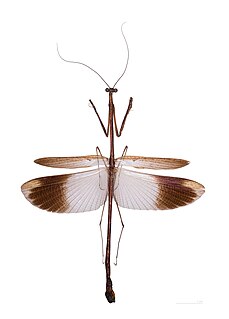 W
WAngelidae is a family of mantises found in tropical Central and South Americas.
 W
WArchaeolepis mane is the earliest undisputed lepidopteran fossil. It dates from the Lower Jurassic. It was found in the Charmouth Mudstone Formation, Dorset, United Kingdom.
 W
WAspidytidae is a family of beetles of the suborder Adephaga, first recorded in 2002 from specimens in South Africa and China, containing a single known genus, Aspidytes. Two species A. warasei and A. niobe have been described.
 W
WThe dryandra moth is a species of moth that is considered to be the sole member of the family Carthaeidae. Its closest relatives are the Saturniidae and it bears a resemblance to many species of that family, bearing prominent eyespots on all wings. The common name is derived from the Dryandra shrubs of the genus Banksia, on which the larva of this species feed, and is hence restricted to the south-west of Western Australia where these shrubs grow. Other Grevillea shrubs may also be used as host plants.
 W
WCooloola is a genus of ensiferan orthopterans known as Cooloola monsters. It is the only genus in the subfamily Cooloolinae and family Cooloolidae of the superfamily Stenopelmatoidea.
 W
WThe Crowsoniellidae are a monotypic family of beetles, in the suborder Archostemata. So far, only a single species, Crowsoniella relicta, has been attributed to this family. Known only from three male specimens collected in 1973 in Italy by Roberto Pace. In a degraded pasture, the beetles were found among the roots of a large hawthorn tree, in deep calcareous soil. No other specimens have been found since.
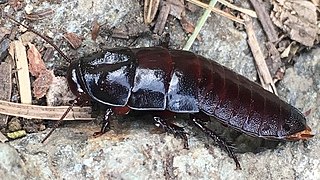 W
WCryptocercus is a genus of Dictyoptera and the sole member of its own family Cryptocercidae. Species are known as wood roaches or brown-hooded cockroaches. These roaches are subsocial, their young requiring considerable parental interaction. They also share wood-digesting gut bacteria types with wood-eating termites, and are therefore seen as evidence of a close genetic relationship, that termites are essentially evolved from social cockroaches.
 W
WDactylopius is a genus of insect in the superfamily Coccoidea, the scale insects. It is the only genus in the family Dactylopiidae. These insects are known commonly as cochineals, a name that also specifically refers to the best-known species, the cochineal. The cochineal is an insect of economic and historical importance as a main source of the red dye carmine. It has reportedly been used for this purpose in the Americas since the 10th century. Genus Dactylopius is also important because several species have been used as agents of biological pest control, and because several are known as invasive species.
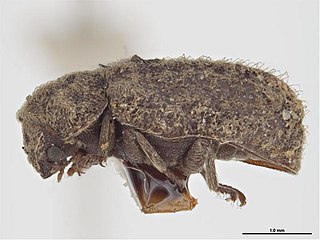 W
WEndecatomidae is a family of beetles in the order Coleoptera. There is one genus, Endecatomus, in Endecatomidae, and four species. Endecatomidae was formerly treated as a subfamily of Ciidae or Bostrichidae.
 W
WGeorissus, also called minute mud-loving beetles, is the only genus in the beetle family Georissidae. They are tiny insects living in wet soil, often near water. Found on every continent except Antarctica.
 W
WGlaresis is a genus of beetles, sometimes called "enigmatic scarab beetles", in its own family, the Glaresidae. It is closely related to, and was formerly included in, the family Scarabaeidae. Although its members occur in arid and sandy areas worldwide, only the nocturnal adults have ever been collected, and both the larvae and biology of Glaresis are as yet unknown. Due to their narrow habitat associations, a great number of these species occur in extremely limited geographic areas, and are accordingly imperiled by habitat destruction.
 W
WThe genus Haematomyzus includes three species of lice that differ so markedly from all other lice that they have been placed in a suborder of their own. These unusual lice are ectoparasites of elephants and warthogs. Their mouthparts are elongated to form a drill-like structure that allows them to penetrate the thick skin of their host.
 W
WHaematopinus is a genus of insects in the suborder Anoplura, the sucking lice. It is the only genus in the family Haematopinidae, known commonly as the ungulate lice. All known species are of importance in veterinary medicine. These lice are some of the worst ectoparasites of domestic animals. Species infest many domesticated and wild large mammals, including cattle, horses, donkeys, swine, water buffalo, African buffalo, antelope, zebra, deer, and camels.
 W
WHelophorus ís the only genus in the beetle family Helophoridae. They are small insects, found mainly in the Holarctic region, but two or three species also live in the Afrotropical region, Central America and one in the Indomalayan region.
 W
WHeloridae is a family of wasps in the order Hymenoptera known primarily from fossils, and only one extant genus.
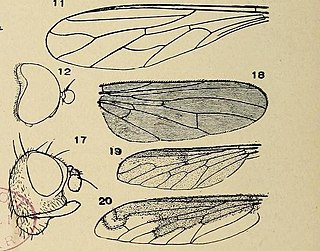 W
WHeterocheila is a genus of acalyptrate true flies (Diptera). They are placed in their own family, Heterocheilidae, in the superfamily Sciomyzoidea. They are not widely familiar outside entomological circles, but the common name "half-bridge flies" has been associated with them. They are medium-sized flies occurring mainly in temperate regions on seashores of the Northern Hemisphere, where they and their larvae typically feed on stranded kelp in the wrack zone. In this, they resemble kelp flies, which are members of a different family, though the same superfamily.
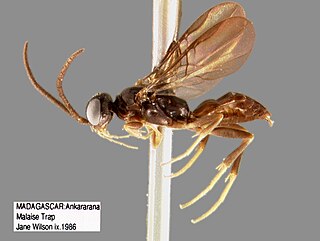 W
WHeterogynaidae is a minor and disputed lineage of small spheciform wasps occurring in Madagascar, Botswana, Turkmenistan, Oman, the United Arab Emirates, and the Eastern Mediterranean area. The majority are dark in color and range in size from approximately 1.5 to 5.0 mm. Most specimens have been collected in arid climates, but one species from Madagascar is known to occur in a humid forest habitat. Although males have functional wings, heterogynaid females are typically brachypterous, a trait which is unique among spheciform wasps. Wing venation is reduced in both sexes. All species are diurnal, with the exception of H. nocticola. Other aspects of their biology are completely unknown, but details of their morphology have prompted researchers to hypothesize that they may be non-fossorial parasitoids adapted to hunt in tight spaces, such as under tree bark. This is speculative and has not yet been confirmed by actual observations of behavior. It is also possible that modifications of the female metasomal tergum VI and gonostyli may represent a unique prey transport mechanism, but this is also unconfirmed.
 W
WHydrochus is a genus of water scavenger beetles in the monogeneric family Hydrochidae, sometimes placed in the Hydrophilidae as a subfamily Hydrochinae. The family Hydrochidae includes about 180 species, all of which are placed in the genus Hydrochus. Hydrochus has also been used for a fly genus in the family Dolichopodidae. This junior homonym is a junior subjective synonym of the genus Rhaphium.
 W
WIsonychia is a genus of brushlegged mayflies in the family Isonychiidae, the sole genus of the family. There are more than 30 described species in Isonychia.
 W
WLamingtoniidae is a very small family of beetles, in the suborder Polyphaga. It contains the single genus Lamingtonium and the single species Lamingtonium binnaberrense. The holotype was collected on at Lamington National Park, Binna Burra, Queensland under the bark of a dead tree.
 W
WLepicerus is a genus of myxophagan beetles containing three described species in the family Lepiceridae; it is the only extant genus in the family, with another genus, Lepiceratus only known from fossils. Extant species occur in the Neotropics, from Mexico south to Venezuela and Ecuador. Fossils referrable to the genus are known from the early Late Cretaceous of Southeast Asia.
 W
WMaaminga is a genus of parasitic wasps containing two species and constituting the family Maamingidae. So far only known from New Zealand, the two named species are Maaminga marrisi and M. rangi. The genus name derives from the Māori word "māminga", simply translated as "trickster" as the species evaded discovery for so long.
 W
WMetallyticus is a genus of praying mantis. It is the only genus in the monotypic family Metallyticidae. They are mostly found in South-East Asia. The species of the genus are dark, somewhat flattened and cockroach-like, and often with a cuticle that is reflective and metallic in appearance.
 W
WMetaxina is the only genus in the beetle family Metaxinidae. Its only species is Metaxina ornata.
 W
WThe telephone-pole beetle is a beetle native to the eastern United States, and the only living representative of the otherwise extinct family Micromalthidae.
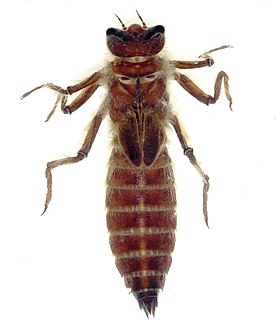 W
WNeopetalia punctata is a dragonfly, the only member of the family Neopetaliidae.
 W
WPedicinus is a genus of sucking louse, the only genus in the family Pedicinidae. Species belonging to this genus are found on Old World monkeys and apes of different kinds. Pedicinus, along with its sister genus Pthirus, are believed to have diverged from their common ancestor approximately 22.5-2.5 million years ago.
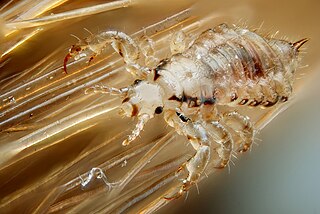 W
WYedit Pediculus is a genius of sucking lice, the sole genus in the family Pediculidae. Pediculus species are ectoparasites of primates.
 W
WThe genus Pelecinus is the only living member of the family Pelecinidae, and contains only three species, restricted to the New World. One species, Pelecinus polyturator, occurs from North through South America, and the others occur in Mexico and South America. The females are glossy wasps, very long and the abdomen is extremely attenuated, used to lay eggs directly on scarab larvae buried in the soil.
 W
WPeltis is a genus of beetles found in North America and Europe, and the sole member of the family Peltidae, formerly included in the Trogossitidae. Members of this genus are dark, averaging from brown, to dark brown, to black. They are small, wide, and flat-bodied with wide, ridged elytra. Fossil species of this genus are known from the Eocene aged Florissant Formation of the United States, as well as the Baltic amber of Europe.
 W
WPhloiophilus edwardsii is the sole known species of the beetle family Phloiophilidae. It is found in the Palearctic.
 W
WPhycosecidae is a small family of beetles, in the suborder Polyphaga. The species are small, about 1.5–3.5 mm in length. It contains the single genus Phycosecis with the following species:Phycosecis ammophilus Lea, 1899 Phycosecis hilli Lea, 1921 Phycosecis limbata (Fabricius, 1781) Phycosecis litoralis Pascoe, 1875
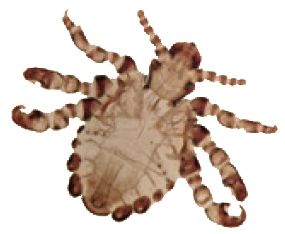 W
WPthirus is a genus of lice. There are only two extant species, and they are the sole known members of the family Pthiridae. Pthirus gorillae infests gorillas, and Pthirus pubis afflicts humans, and is commonly known as the crab louse or pubic louse. The two species diverged some 3.3 million years ago.
 W
WThe Sierolomorphidae are a family of about 10 known species of wasps, all in the genus Sierolomorpha, found in the Northern Hemisphere. They are rare and very little is known of their biology.
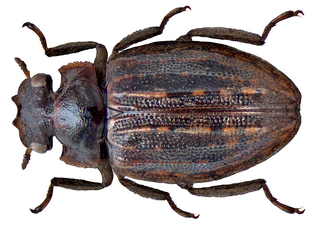 W
WSpercheus is a genus of aquatic beetles which are placed in a family of their own, Spercheidae. About 20 species are known from around the world, with the majority being from the Oriental and Afrotropical Realms.
 W
WSphaerites is a genus of beetles, the only genus in the family Sphaeritidae, sometimes called the false clown beetles. It is closely related to the clown beetles but with distinct characteristics. There are five known species, widespread in temperate area but not commonly seen.
 W
WSyntelia is a genus of middle-sized beetles described by John O. Westwood in 1864. It is the only genus in the family Synteliidae erected by George Lewis in 1882.
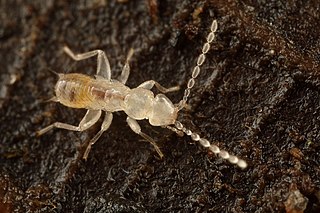 W
WThe insect order Zoraptera, commonly known as angel insects, contains small and soft bodied insects with two forms: winged with wings sheddable as in termites, dark and with eyes (compound) and ocelli (simple); or wingless, pale and without eyes or ocelli. They have a characteristic nine-segmented beaded (moniliform) antenna. They have mouthparts adapted for chewing and are mostly found under bark, in dry wood or in leaf litter.